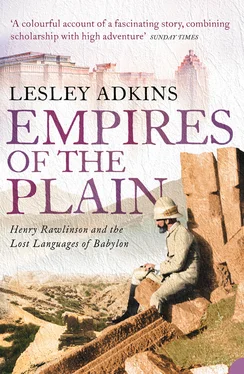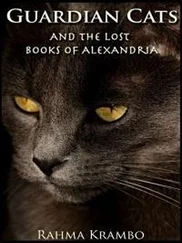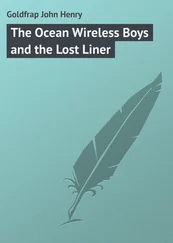1 ...8 9 10 12 13 14 ...26 Still unable to move on to Tehran, Rawlinson made a further trip with two other officers and his head groom back into the mountains, this time to explore the deserted ruins of Bishapur – ‘The Beautiful [City of] Shapur’ – a city that had been founded nearly eight centuries after Persepolis. It took its name from the second Sasanian ruler of Persia, Shapur I, who ruled for over three decades from AD 240. He belonged to the Sasanian (or Sassanian) dynasty that was founded by Ardashir, supposedly a descendant of the legendary ruler Sasan. Shapur himself was particularly successful in battle against the powerful Roman Empire, defeating two of its emperors and even capturing Valerian in AD 260 – the only time a Roman emperor was taken prisoner. At Bishapur Shapur’s victories were commemorated in three sculptured reliefs on the rock faces of a river gorge, showing the king on horseback trampling and receiving in submission his Roman enemies, while beyond the gorge at the foot of a mountain he built the royal city of Bishapur.
Rawlinson had been warned that ‘a notorious Robber chief had possession of the whole country and it was as much as my life was worth to venture into his lands. I also learnt from my servant who had been in his service, that Bakir Khan the son was in reality a very good fellow, smoking his segar [cigar], and taking his glass of wine as kindly as any English gentleman – he was also a very good rider and first rate shot … I took the precaution therefore before starting to take a few presents, on the chance of meeting Bakir Khan, and above all I put aside a few bottles of sherry and brandy.’ 3
After some hours sketching ruins and copying inscriptions, they rode on a few miles and agreed to climb a steep mountain to look for the famous Cave of Shapur with its colossal statue of Shapur I, once over 20 feet high, but now collapsed. ‘Up to this time,’ Rawlinson recorded, ‘we had not seen a single soul in any part of the ruins and so hoped to escape all observation of the robber tribes who lived near.’ 4 Leaving their horses with the groom, they began the difficult climb in the sweltering heat. Although they were all capable, resourceful soldiers, only Rawlinson had the nerve and climbing ability to reach the cave: ‘The ascent of the mountain was exceedingly difficult, and my two companions … gave in before reaching the summit. I went on, found the cave and carved my name on the statue.’ 5 Some years later he was told that ‘some travellers, penetrating to the statue and imagining they were the first Europeans to visit the spot, were misdeceived and astonished by finding it’. 6
For two hours Rawlinson stayed in the cave, while his companions returned to camp, so when he returned to his groom, he was alarmed to be surrounded by Persian horsemen, followers of Bakir Khan, who was himself visible in the distance. In order to avert a potentially dangerous situation, Rawlinson rode straight up to him and greeted him in Persian. Although he was reproached for coming to the area like a spy, a friendly conversation followed, ending with Bakir Khan asking for something to drink. Rawlinson’s groom filled up a drinking cup with half a bottle of brandy, which Bakir proceeded to drink rather rapidly until he staggered about and collapsed. Immediately Bakir’s men aimed their long matchlock guns at Rawlinson, who seized the cup and drank the remaining liquid in case it was thought to be poisoned. While they hesitated to fire, Bakir Khan showed signs of recovery and asked: ‘Sahib, what was that liquid fire you gave me? It was very good but awfully strong. I thought it was sherry, but it was the father of all sherries, where did it come from?’ 7 Rawlinson diplomatically replied that he had given him brandy, the strongest of all liquors, having heard he could drink anything. Before leaving, Bakir promised ‘to take care of any travellers who might bring letters from me, and I believe he acted up to this promise [and] always behaved well to Englishmen’. 8 Rawlinson was saddened a few years later when Bakir Khan was killed by government forces ‘for some banditti proceedings’. 9
With weather conditions improving, the detachment set off from Shiraz towards the end of February and managed to travel 250 miles until hampered by deep snow in the mountain passes beyond Isfahan. From the late sixteenth century, Isfahan had been transformed into one of the most magnificent cities of Persia by Shah Abbas I (ruler from 1588 to 1629), who made it his capital. Its splendour was short-lived, as the Afghans invaded Persia and besieged the city in 1722, massacring most of its inhabitants, and it never recovered its former glory. After a week, the British detachment advanced as far as Qum (pronounced Ghom in Persian), one of the most sacred places of pilgrimage for the Shi’ite Muslims.
In AD 817, Fatima al-Ma’suma died on a journey to her brother, Imam Ali Reza, and was buried at Qum, where her shrine became a site of pilgrimage. Imam Ali Reza died a year later and was buried at Messed in north-east Persia, the country’s holiest city. Both the shrine of Imam Reza and that of Fatima were restored some eight hundred years later by Shah Abbas I and, not long before Rawlinson’s visit, the reigning Shah, Fath Ali, had repaired Fatima’s shrine and embellished the dome with gilding. The shrine was strictly barred to non-believers, but Rawlinson was determined to be the first European to gain entry, even though it was ‘whispered that instant death would be the portion of the audacious infidel who should be found intruding into its hallowed precincts’. 10 Over fifty years later, he wrote that ‘I visited the sacred shrine in the disguise of a pilgrim, a visit of great danger which has never been repeated by any one up to the present time’. 11 Thrilled to be inside, he was nearly detected by turning his back on the holy spot as he viewed everything around him, but realized his error in time – and came out alive.
The detachment continued northwards from Qum for another 90 miles and finally reached Tehran in mid-March. The city lies in the foothills of the Elburz mountains, a snowy backdrop dominated by the dormant volcano Damavand, which is the highest mountain in Persia at 18,600 feet. It was only a modest trading town when it became the capital city of Persia in 1789, but over half a century later Tehran’s population had risen to around 50,000. A near-contemporary description of the city was uncomplimentary, reckoning that the ‘streets swarm in the day time with beggars from every region in Asia, their attire as diversified as their extraction … The Bazaars of Teheran are constructed in the form of long, covered corridors, lighted from above. On either side of the interior, are ranges of shops, occupied by dealers and working people, each quietly plying his avocation … The Bazaar is both a market and a factory … The streets of Teheran have never been cleaned since the place was built … The public ways are infested with the remains of camels, apes, mules, horses, dogs and cats; and here they lie, until some starving dog strips the bones of their flesh, and leaves them to the gradual corrosion of time’. 12 The detachment remained at Tehran for several months ‘studying Persian and becoming acquainted with the country’. 13
To emphasize his importance, Fath Ali Shah, the second ruler of the Qajar dynasty, kept the officers of the detachment waiting a few weeks before receiving them, and Rawlinson’s own observations of the occasion indicate his opinion of the absurd pomp and rigid etiquette. In order to impress the Persians, Rawlinson and the other officers formed a glittering and gaudy spectacle as they set out on their horses from the residence of the British Envoy in the south of the city. ‘A party of two-and-twenty Europeans thus brilliantly attired,’ Rawlinson noted, ‘is a spectacle to which the eyes of the Teheranees are but little accustomed.’ 14 Riding through the narrow streets and bazaars, they reached the Golestan Palace, dismounted and were led through courtyards and gloomy passages to the splendid Golestan Garden. The Shah was in an adjoining audience room, ‘but, it being utterly inconsistent with etiquette that we should proceed thither by the direct route, we were paraded half round the enclosure before being permitted to approach the throne’. 15 Seated on a throne in one corner of the room overlooking the garden, the Shah was surrounded by sword and shield bearers and miscellaneous princes, who were attired in expensive robes and equipped with jewel-encrusted weapons. The throne, Rawlinson observed, ‘was shaped much like a large high-backed old-fashioned easy chair, and, though made of gold, and studded throughout with emeralds and rubies, appeared a most strange ungainly piece of furniture’. 16
Читать дальше












